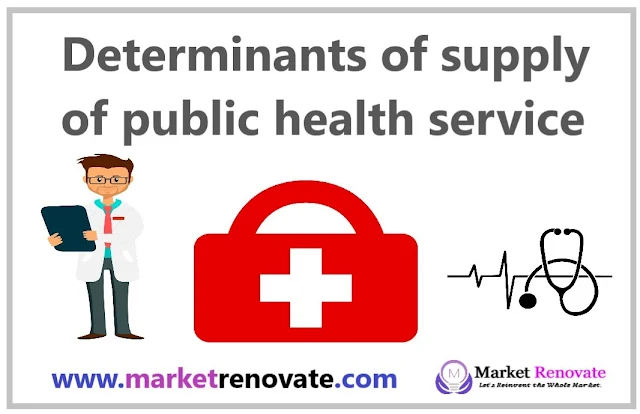Public Health Service Meaning
A public health service refers to a range of organized efforts and activities aimed at improving and safeguarding the health and well-being of communities and populations. It involves various initiatives, programs, and interventions designed to prevent diseases, promote healthy behaviors, and address health disparities on a larger scale.
Public health services encompass a wide array of activities that contribute to the overall health of a population. These can include:
- Health Education and Promotion: Providing information and education about healthy behaviors, disease prevention, and wellness to empower individuals and communities to make informed choices.
- Vaccination and Immunization Programs: Administering vaccines to protect against infectious diseases and ensure community immunity.
- Disease Surveillance and Control: Monitoring and tracking the occurrence of diseases, identifying outbreaks, and implementing measures to control and prevent their spread.
- Screening and Early Detection: Offering screenings and tests to identify health conditions at an early stage, allowing for timely intervention and treatment.
- Community Outreach and Engagement: Connecting with communities, building partnerships, and involving local stakeholders to address health needs and promote well-being.
- Environmental Health: Ensuring safe and healthy living environments by monitoring air and water quality, sanitation, and addressing environmental hazards.
- Policy Development: Advocating for and implementing health policies and regulations that promote public well-being and create supportive environments for healthy living.
- Emergency Preparedness and Response: Developing plans and strategies to respond effectively to public health emergencies, such as natural disasters or disease outbreaks.
- Health Equity and Disparities Reduction: Working to reduce health inequities by addressing social determinants of health and ensuring equal access to healthcare services for all population groups.
- Research and Data Analysis: Conducting research, collecting data, and analyzing health trends to inform decision-making and develop evidence-based interventions.
Public health services are typically provided by government agencies, public health departments, non-governmental organizations (NGOs), and other entities dedicated to improving the health and well-being of communities. The ultimate goal of public health services is to create healthier populations, prevent illnesses, and enhance the quality of life for everyone within a given area.
Determinants of supply of public health service/ Factors Affecting the supply of public health service
The supply of public health services is influenced by a variety of factors that affect the availability, accessibility, and delivery of healthcare interventions and programs aimed at improving population health. These determinants play a crucial role in shaping how public health services are provided to communities. Here are some key determinants of the supply of public health services:
- Government Policies and Funding: Public health services are often funded and regulated by government agencies at various levels (local, regional, national). Government policies, budget allocations, and priorities impact the scope and scale of public health programs and initiatives.
- Healthcare Infrastructure: The presence and quality of healthcare facilities, clinics, hospitals, and public health departments influence the capacity to deliver public health services effectively.
- Workforce Availability: The availability of trained and qualified public health professionals, including epidemiologists, health educators, nurses, and environmental health specialists, determines the workforce capacity for delivering services.
- Community Needs and Demographics: The specific health needs, demographics, and health challenges of a community influence the types of public health services that are provided and tailored to meet those needs.
- Technological Resources: Access to technology, including information systems, data analysis tools, and telehealth capabilities, can enhance the efficiency and reach of public health service delivery.
- Research and Evidence-Based Practices: The integration of research findings and evidence-based practices into public health services ensures that interventions are effective and aligned with current knowledge.
- Collaboration and Partnerships: Collaborative efforts between government agencies, non-governmental organizations, community-based organizations, and private sector entities can expand the capacity to provide public health services.
- Emergency Preparedness: The ability to respond to public health emergencies, such as disease outbreaks or natural disasters, influences the readiness and resilience of public health service delivery.
- Health Information Systems: Robust information systems for data collection, analysis, and reporting contribute to effective monitoring, evaluation, and improvement of public health services.
- Health Literacy and Education: Public health services are more effective when communities have a good understanding of health issues, enabling them to make informed decisions and participate actively in health promotion activities.
- Cultural Competency: Tailoring public health services to the cultural norms, beliefs, and preferences of the population being served enhances the effectiveness and acceptance of interventions.
- Availability of Resources: The availability of financial resources, medical supplies, equipment, and medications directly impacts the range and quality of public health services.
- Public Awareness and Engagement: Effective communication and community engagement efforts are essential for promoting public health services, increasing demand, and encouraging participation.
- Regulatory Environment: Regulatory frameworks, including licensing, accreditation, and quality standards, influence the delivery of safe and effective public health services.






Please leave your comments or ask your queries here. The comments shall be published only after the Admin approval.